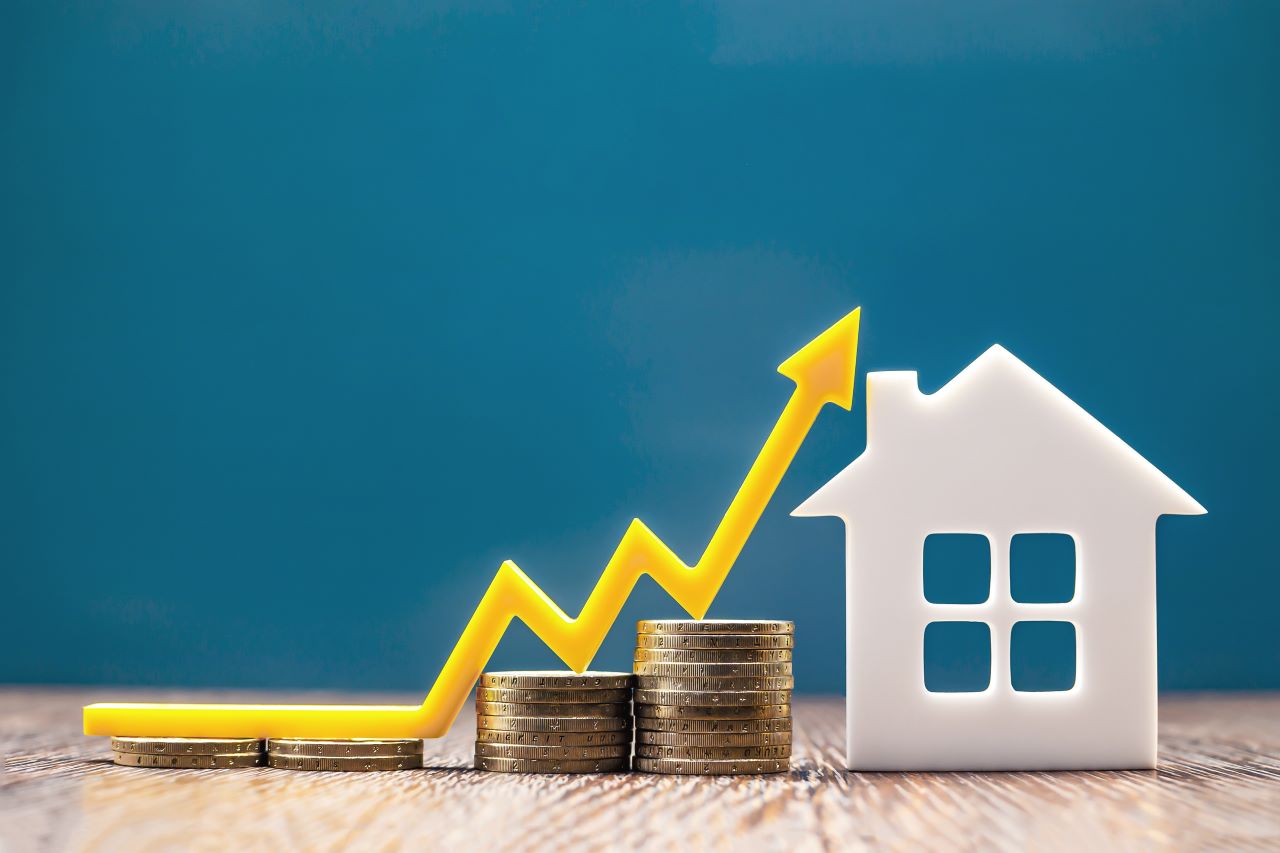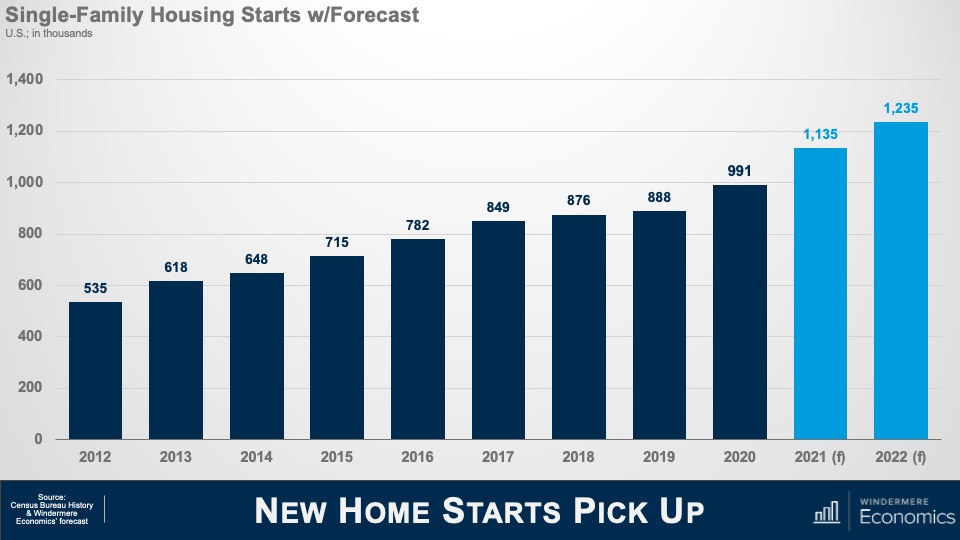
Each year, Windermere’s Chief Economist, Matthew Gardner, helps us plan for the year to come with his annual forecast about the state of the economy and upcoming housing market trends.
According to Gardner, the U.S. housing market has been a beacon of hope during the pandemic period. Given the massive spike in demand that started last June, he’s expecting more than 6 million existing homes will have changed hands in 2021. However, he doesn’t see this level increasing in 2022 – mainly due to ongoing supply limitations as well as rising affordability issues. Therefore, Gardner is forecasting sales to modestly pull back in 2022. That said, the country has never seen more than 6 million homes sold in a single year since records were first kept, so the number is still very impressive.

With the market as tight as it has been so far in 2021, it shouldn’t be any surprise to see median sale prices skyrocketing. Even though there are 3 more months of sales data yet to be released for this year, Gardner anticipates prices will have risen by almost 16.5 % in 2021 — a remarkable number. This pace of appreciation has never been seen before. The closest was in 2005, when the housing bubble was inflating rapidly, but even then prices only rose by 12.2%.

However, as Gardner mentioned in his sales forecast, this pace of growth is unsustainable. He is expecting to see some of the heat to come off the market next year, but a growth rate of 7.3% should still be noted.
There are three major reasons why the market will see the pace of growth slow. Gardner has concerns regarding housing affordability, but mortgage rates and new supply will also influence the slowdown in sales and price growth for resale homes.

Although Gardner does not prepare a forecast for housing affordability, this is where he expects to see mortgage rates through the end of next year; he is predicting they will continue “stair-stepping” higher, but still ending 2022 below 4%. This is very low by historic standards given that the long-term average for a conventional 30-year mortgage is somewhere around 7.5%.
As rates notch higher, this will start to compress price growth as it puts a lower ceiling on how much a buyer can afford to pay for a home.

Slowing growth in existing home prices and sales will also be a function of additional supply. The chart above shows Gardner’s forecast for single-family starts this year and in 2022. Gardner expects more than a million homes to start construction in 2022, continuing the trend that started in mid-2020. This may confuse some people, because if starts are already robust, how have existing home sales been able to increase so significantly if there has been solid supply coming from homebuilders? Gardner says this is a great question.
He answers this by explaining that the way the Census gathers data on starts is by counting the number of home foundations that have been poured — but this does not mean vertical construction has necessarily started. The market has seen a lot of foundations poured, but not so many homes actually being built. Gardner knows this by looking at the number of homes that are for sale but have yet to be started. It’s important to look at a separate number the Census Bureau also puts out, which counts the number of units actually under construction — and that number has been growing significantly over the last 18 months.

Builders have been hamstrung with rising labor and material costs, which will lead new home sales this year to fall below the number seen in 2020; however, Gardner expects this to pick up significantly next year and his current forecast calls for 927,000 new homes to be sold in 2022.
There are still a number of variables that could lead Gardner to revise this housing forecast but, as an old economics professor used to say, “Forecast well, but forecast often!”
If everything goes according to Gardner’s plan, expect to see the housing market start to move toward some sort of balance next year. However, Gardner believes it will still remain out of equilibrium until at least 2023.
For those who may be wondering, Gardner does not see a housing bubble forming, and he’s also not concerned about homeowners currently in forbearance. However, it would be incorrect to say that there aren’t any issues in the housing market that concern him. The biggest of these is housing affordability; this will have a significant impact on the Millennial generation who are getting older, thinking about settling down, and possibly expanding the size of their households. Gardner wonders how hard it will be for many of them to be able to afford to buy their first home. Will builders figure out how to build to this massive pent-up demand? Gardner guarantees that whoever can solve this puzzle will do very well.
COVID-19 caused an unparalleled shock to the U.S. economy, and the rise of the Delta variant has certainly impacted the speed of our recovery. But rest assured, Gardner firmly believes that we will recover and that the economy will continue to grow.
Demand for ownership housing remains remarkably buoyant. It is quite likely that demand may actually increase further as the work-from-home paradigm gains more momentum in 2022. It will be fascinating to see how this impacts not just demand, but where buyers will ultimately choose to live.

 Facebook
Facebook
 Twitter
Twitter
 Pinterest
Pinterest
 Copy Link
Copy Link

